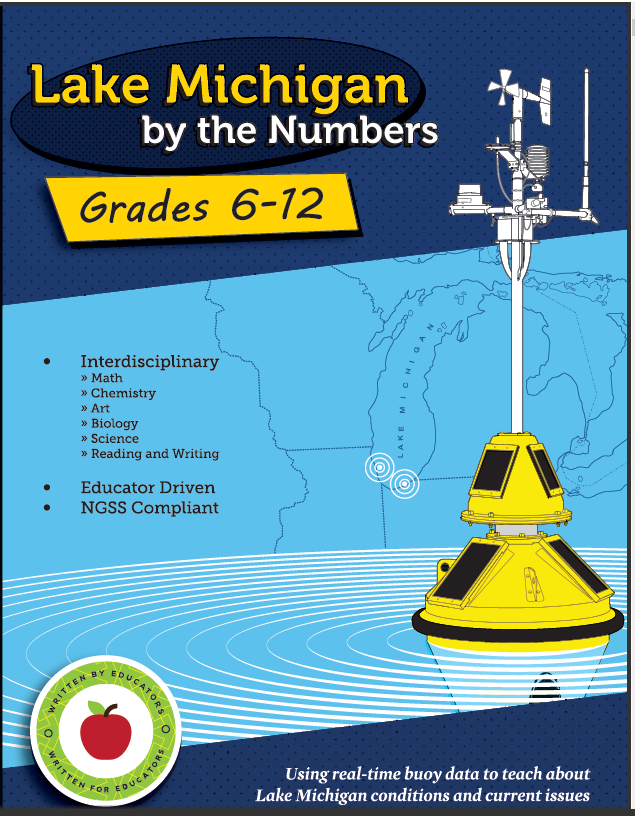
File Size: 14.00 MB
A curriculum for integrating real-time buoy data as a teaching tool about Lake Michigan conditions and current issues.

A curriculum for integrating real-time buoy data as a teaching tool about Lake Michigan conditions and current issues.

A collection of activities connecting Great Lakes and ocean science topics to enhance teacher capabilities for accessing science information that is vital to maintaining the environmental health and economic benefits of our nation’s freshwater and marine systems.

Feature Headlines

Feature Headlines

This site provides easy access to long-term, environmental monitoring data collected throughout the Great Lakes.
For more detailed information, visit Great Lakes Monitoring

Angler Archive provides easy access to long-term recreational fishing data collected in southern Lake Michigan. These data have been provided by the Illinois Natural History Survey (INHS) and Indiana Department of Natural Resources (IDNR). The Angler Archive allows you to explore trends in three recreational fisheries from the mid 1980s, filter and compare data by factors such as month, site, and target species, visualize the data in a number of different ways, and export charts and data table.
For more detailed information, visit Angler Archive

Feature Headlines

The Great Lakes Sea Grant Social Science Network (GLSGSSN) evaluated the impact based warning (IBW) product throughout the National Weather Service (NWS) Central Region in 2013. The evaluation study builds off previous work commissioned by the NWS (Galluppi et al. 2013). Galluppi’s study assessed the product in 2012, when five Weather Forecast Offices (WFOs) piloted the IBW product. The study we conducted reveals the product’s effectiveness throughout the NWS Central Region, which includes 38 WFOs. Our evaluation data was collected using focus groups, interviews, and surveys of NWS weather forecasters, emergency managers, and broadcast media to assess the product’s effectiveness.

This program provides the opportunity for educators to borrow actual monitoring equipment used by scientists in the field and for students to experience collecting and analyzing real water-quality data. It is a great way to bring to life the topic of water quality for your students, and bring the outdoors to your classroom or your classroom outdoors!
For more detailed information, visit Limno Loan